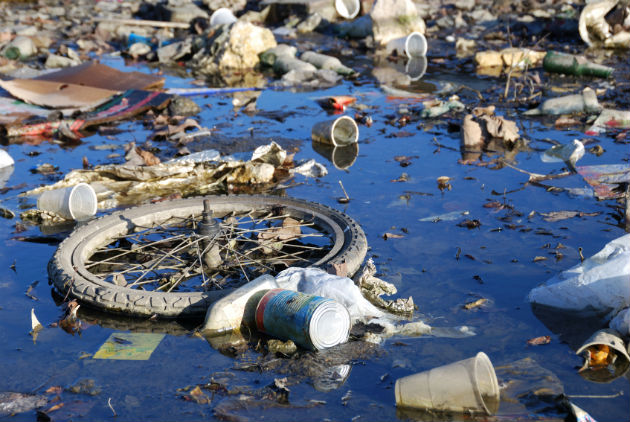
Netherlands-based Ramon Knoester of the international architecture firm WHIM has proposed what some might perceive as an outlandish research project — namely, to see if it’s possible to transform the vast majority of the plastic waste clogging the middle of the Pacific Ocean into a useful, fully habitable Hawaii-sized island.
The Texas-sized patch of marine trash that he is interested in focusing on, trapped between North Pacific Gyre currents, has been wreaking havoc on ocean creatures, seriously compromising albatross populations and leaching PCBs, Bisphenol A and other endocrine-disrupting polystyrene plastic compounds into the water for decades now.
While scientists continue to grapple with the question of how on earth we can possibly rectify what has become one of the most serious and far-reaching eco-tragedies of our era, this tangle of plastic pollution continues to stew in the middle of the ocean, breaking down into varying-sized pieces that in theory seem practically impossible to contain.
What if a seeming eco-dreamer like Knoester could make something good come out of what has up until now been incredibly bad? Unlike other research and cleanup proposals such as the SEAPLEX expedition, Project Kaisei and David Mayer de Rothschild’s turbine-powered Plastiki, which have all attempted to determine if removing our ocean-bound post-consumer plastic waste is even conceivable, Knoester is taking a markedly different approach.
Thanks to a grant awarded by The Netherlands Architecture Fund, the architect is in the midst of exploring whether his vision of a Recycled Island can indeed be executed. A recycled what? Rather than removing the waste, which in many cases has broken down into 1-centimeter-wide bits, Knoester is suggesting that the more sizable pieces be harnessed into an eco-friendly land base that can be built upon, accommodating the increasing number of today’s climate refugees.
Besides the obvious benefit of mining this ecological nightmare to remove part of the major threat facing our marine life today, the Recycled Island concept does so much more. It offers a practical, fiscally approachable option for waste that has no business being in the middle of the ocean in the first place. To drag it out of the water and onto land would admittedly be the most ideal course of action, but that would more than likely be wildly cost prohibitive; whereas anchoring it in place and making something positive rise from the mess… well, now we’re talking.
Knoester’s self-sufficient, green lifestyle settlement — featuring all of the eco-comforts of home, including agriculture, seaweed cultivation and green energy generation — could potentially become the poster child and model for future floating cities, particularly in light of the recent discovery that the Great Pacific Garbage Patch has an evil twin doppelganger in the Atlantic Garbage Patch.
Many of the world’s great ideas once began as pie-in-the-sky notions — the only difference with Knoester’s concept is that we need it to come to fruition because time is ticking, and unfortunately not in Mother Nature’s favor. In this instance, a plastic phoenix rising above the ocean could actually be a good thing.